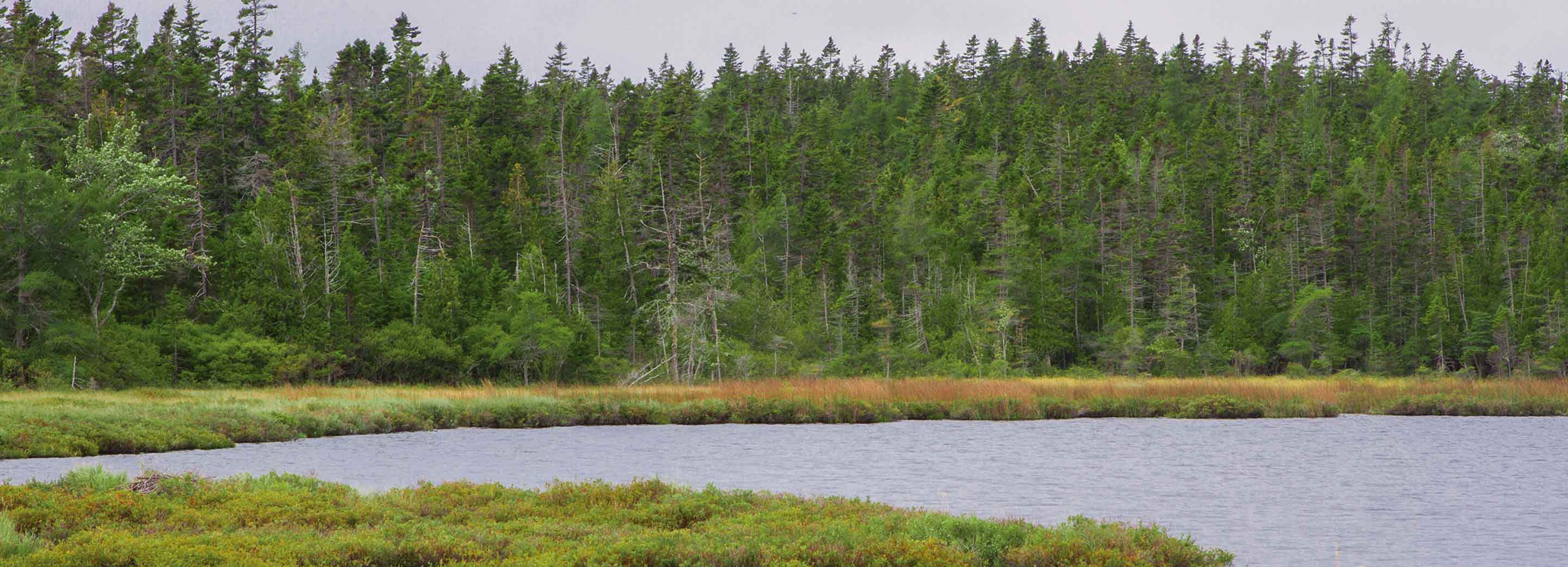Headwater Streams
For more than a decade, Manomet worked with landowners to assess which timber harvesting practices were most effective in protecting water quality and aquatic biodiversity. The research covered millions of acres in northern Maine and involved 4 major timber landowners, more than a dozen scientists and 35 science interns. This research included the largest and best-designed study examining the impacts of timber harvesting on streams in eastern North America. Manomet used its many public and private partnerships to get the study results incorporated into state and regional land use regulations, forestry practices on state and private land, industry-supported standards and to support the rigorous application of best management practices during timber operations to protect water. Manomet continues to provide advice to landowners and policymakers about how to best protect water quality while continuing to meet society’s needs for wood products.
Forests and Clean Water Publications
Gunn and Wilkerson. 2011. Summary of Manomet’s Work in the Crooked River Watershed.
Wilkerson et al. 2010. The effectiveness of different buffer widths for protecting water quality and macroinvertebrate and periphyton assemblages of headwater streams in Maine, USA. Manuscript.
Whitman. 2006. A cost effective method for tracking late-successional forests important to forest biodiversity.
Wilkerson et al. 2006. The Effectiveness of Different Buffer Widths for Protecting Headwater Stream Temperature in Maine. Manuscript.
LeDoux and Wilkerson. 2006. A case study assessing opportunity cost and ecological benefits of streamside management zones and logging systems for eastern hardwood forests.
Manomet Center. 2007. Riparian Biodiversity Project Summary.
Wilkerson. 2006. Ecology and Management of Headwater Streams . Presentation (.ppt).
Wlikerson and Hagan. 2006. Changes in Macroinvertebrate Communities Following Timber Harvest. Poster.
Gunn, Ganz and Keeton. 2011. Biogenic vs. geologic carbon emissions and forest biomass energy production.
Forest Biodiversity
For two decades, Manomet has worked with major landowners to develop practices and tools to conserve forest biodiversity while still cutting wood. This work includes studies of birds, ground beetles, lichens, mosses, liverworts, vascular plants and forest structure in managed and old-growth forests. The research covered over 8 million acres and two dozen industrial and public ownerships. The results have helped landowners changes their practices to better conserve biodiversity. Manomet continues to provide advice to landowners and policy makers about how to best conserve biodiversity while continuing to meet society’s needs for wood products.
Forest Biodiversity Publications
Whitman. 2014. Outcome-based Forestry for Conserving Old-Growth in the Acadian Forest (Presentation)
Whitman and Jacobson. 2012. Climate Change and Vermont’s Future Ecosystems – Stationary is Dead. (Presentation)
Hagan, Irland, and Whitman. 2005. Changing Timberland Ownership in the Northern Forest and Implications for Biodiversity.
Hagan and Whitman. 2004. Late-successional Forest: A disappearing age class and implications for biodiversity.
Whitman and Hagan. 2009. A Revised Rapid-Assessment Late-Successional Index for Northern Hardwoods and Spruce-Fir Forest.
Hagan and Whitman. 2005. Late-Successional Old Growth Dialogue Meeting Summary Document.
Whitman, A. and J. Hagan. 2003. Legacy Retention: A Tool for Retaining Biodiversity in Managed Forests.
Forest Sustainability Indicators
While working under the aegis of the National Commission on Science for Sustainable Forestry, Manomet spent five years studying forest indicators by working with landowners in New England and in forest communities across the nation to better understand how best to select and use indicators to support sustainable forestry. Though the project was led by scientists at Manomet, their conclusion was that indicator selection and use is primarily a social issue, not a technical or scientific issue. In order to succeed, every indicator selection effort must consider the values of society and its stakeholders, as well as what is practical and useful for the users.
Forest Sustainability Indicators Publications:
Simons, E., D. Harrison, A. Whitman, and J. Wilson. 2010. Quantifying Biodiversity Values across Managed Landscapes In Northern And Western Maine
Hagan and Whitman. 2007. Considerations in the Selection and Use of Indicators for Sustaining Forests. NCSSF Report.
Hagan and Whitman. 2006. Biodiversity Indicators for Sustainable Forestry: Simplifying Complexity. Jourrnal of Forestry 104:203-210.
Whitman et al. 2009. A Forest Biodiversity Scorecard for Northeastern Managed Forest Landscapes.
Forest Recreation
Quality outdoor recreation is vital to the economy and character of the Northern Forest Region. However, landowners everywhere have become increasingly concerned about keeping their lands open to recreation. At the heart of landowner concerns are negative perceptions about how recreation affects their lands, but there is little hard data to support these perceptions. Manomet’s Recreation Stewardship Scorecard provides trail groups with a practical, science-based tool for monitoring and managing the impact of recreational trails. The use of this tool ensures good trail stewardship and prevents recreational forest use from damaging the environment.
Forest Recreation Publications
Wilkerson and Whitman. 2009. A Recreation Trail Scorecard for Evaluating Trails in Northern New England.
Wilkerson and Whitman. 2009. Recreation Trail Stewardship Scorecard: User Guide.
Wilkerson and Whitman. 2010. Recreation Trails in Maine and New Hampshire: A Comparison of Motorized, Non-Motorized, and Non-Mechanized Trails. USDA publication.





 Back to all
Back to all